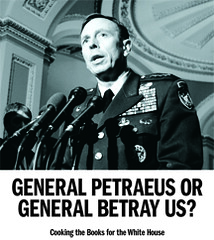Consumer marketing, better known as viral marketing, continues to be a hit-or-miss method of increasing brand awareness that some marketers and advertisers only dream about. Some take the form of funny videos (Justin Timberlake on Saturday Night Live comes to mind) whereas others take the form of something else all together (like Facebook). Most, of course, never go anywhere or get off the ground.
To gain a better understanding of consumer marketing, I decided to go to the source. While there are forums, Web sites, e-newsletters, and several other fan-generated promotional efforts associated with Jericho, the television show resurrected by CBS after one of the most convincing and well-publicized cancellation protests in history, bloggers tend to be on the front lines.
So I asked five dedicated and prolific Jericho bloggers to answer a few questions this week. Three of them answered in time to be included today: Lisa Coultrup (Jericho On CBS); Teresa Rothaar (Jericho Bulletin); and Jane Sweat (Jericho Monster, among others).
Interestingly enough, while these three bloggers might seem to dominate Jericho content online, none of them had much social media experience beyond personal projects (whether MySpace or Live Journal) prior to the show cancellation. In a few short months (and many, many hours), they’ve emerged as semi-experts in social networking and online message proliferation.
“I had just begun a WordPress blog called ‘Trippin’ about a month before Jericho began and then started another WordPress blog for Jericho in October,” says Coultrup. “So, I’d gotten my feet wet in both fields [before the cancellation]. One thing I have learned is that social behavior is vastly different than it is in real life. There are more behavioral rules.”
Learning the sometimes complex behavioral rules online isn’t the only challenge. While fans are partly responsible for the buzz they generate, they often operate without any support network whatsoever. They have no little or no access to CBS or the producers of the show and sometimes feel like they have to fight for content ideas and information that will eventually benefit the network.
“People don’t want to read the same darn things on multiple sites so I had to make a choice to make the blog multifunctional or have it go dormant,” explains Rothaar. “So I decided to branch out and talk about things that have nothing to do with "Jericho," like the housing meltdown.”
Jane Sweat has made some inroads into the interview arena to provide new content, but it requires significant effort on her part. She often scours the Web looking for people off the beaten path. And, on occasion, she manages to capture a blogger (with a blog not specific to the show), cast member, or member of the production crew.
“There is a real lack of communication with the network,” says Sweat. “I know a network can't communicate with individual fans, but I think they could find a way to work with us better, having fans submit artwork, fan fiction, blog posts, etc. to highlight their efforts and use it for promotional purposes.”
In the greater context of consumer marketing, CBS is not the only one that might take notice. If there is something to be learned from spontaneous consumer marketing it is that once the company begins to benefit, there exists a need to follow through. Without support, consumers might become frustrated with challenges unique to being a consumer marketer.
All three said if they were calling the shots at CBS, they would improve the communication and even create a partnership between the marketing arm of the show and the fans that are promoting it. All of them suggested CBS could enhance its own Jericho marketing efforts, allowing them to take on a supported ancillary role. At the same time, they prescribe more content to write about in the form of CBS-sponsored contests, giveaways, blogger cast member interviews, promotional material, story ideas, and photos. All of which, they say, would help them interact with the fans.
Along with this, CBS might consider working its non-paid marketing arm to help define suitable measures. Other than tracking traffic and comment counts, all of them seem unsure of what to measure (that’s okay … most companies don’t know what to measure online either).
While some might argue companies cannot necessarily invest in every blogger who takes an interest in a product or show; I might offer up it is often the companies that encourage the initial efforts. In the case of Jericho, CBS has all but placed the burden of making the show successful onto the fans. (To balance this a bit, part of the equation might be speed to market. CBS has BTR host Shaun O'Mac reporting from Jerichon in Kansas and the Production Blog demonstrates some of the better insider work, among other things.)
Of course, none of this meant to suggest these three bloggers are unappreciative of the recognition they have received. All three were thrilled that CBS linked to their blogs at Jericho Fan Central. Otherwise, however, most the recognition, they say, has come from other fans.
But that’s all right. None of them began writing about Jericho to receive individual recognition. In fact, if there is one constant among bloggers and other fans who promote the show, it seems obvious why they originally lent their support: they love the program enough to do whatever it takes to ensure its success.
Consumer marketing. While many companies want to benefit from it, very few seem to know what to do with it once they actually get it. Here’s one idea: ask the fans and then deliver. Heck, we’ve even been doing that here for some time now.

To gain a better understanding of consumer marketing, I decided to go to the source. While there are forums, Web sites, e-newsletters, and several other fan-generated promotional efforts associated with Jericho, the television show resurrected by CBS after one of the most convincing and well-publicized cancellation protests in history, bloggers tend to be on the front lines.
So I asked five dedicated and prolific Jericho bloggers to answer a few questions this week. Three of them answered in time to be included today: Lisa Coultrup (Jericho On CBS); Teresa Rothaar (Jericho Bulletin); and Jane Sweat (Jericho Monster, among others).
Interestingly enough, while these three bloggers might seem to dominate Jericho content online, none of them had much social media experience beyond personal projects (whether MySpace or Live Journal) prior to the show cancellation. In a few short months (and many, many hours), they’ve emerged as semi-experts in social networking and online message proliferation.
“I had just begun a WordPress blog called ‘Trippin’ about a month before Jericho began and then started another WordPress blog for Jericho in October,” says Coultrup. “So, I’d gotten my feet wet in both fields [before the cancellation]. One thing I have learned is that social behavior is vastly different than it is in real life. There are more behavioral rules.”
Learning the sometimes complex behavioral rules online isn’t the only challenge. While fans are partly responsible for the buzz they generate, they often operate without any support network whatsoever. They have no little or no access to CBS or the producers of the show and sometimes feel like they have to fight for content ideas and information that will eventually benefit the network.
“People don’t want to read the same darn things on multiple sites so I had to make a choice to make the blog multifunctional or have it go dormant,” explains Rothaar. “So I decided to branch out and talk about things that have nothing to do with "Jericho," like the housing meltdown.”
Jane Sweat has made some inroads into the interview arena to provide new content, but it requires significant effort on her part. She often scours the Web looking for people off the beaten path. And, on occasion, she manages to capture a blogger (with a blog not specific to the show), cast member, or member of the production crew.
“There is a real lack of communication with the network,” says Sweat. “I know a network can't communicate with individual fans, but I think they could find a way to work with us better, having fans submit artwork, fan fiction, blog posts, etc. to highlight their efforts and use it for promotional purposes.”
In the greater context of consumer marketing, CBS is not the only one that might take notice. If there is something to be learned from spontaneous consumer marketing it is that once the company begins to benefit, there exists a need to follow through. Without support, consumers might become frustrated with challenges unique to being a consumer marketer.
All three said if they were calling the shots at CBS, they would improve the communication and even create a partnership between the marketing arm of the show and the fans that are promoting it. All of them suggested CBS could enhance its own Jericho marketing efforts, allowing them to take on a supported ancillary role. At the same time, they prescribe more content to write about in the form of CBS-sponsored contests, giveaways, blogger cast member interviews, promotional material, story ideas, and photos. All of which, they say, would help them interact with the fans.
Along with this, CBS might consider working its non-paid marketing arm to help define suitable measures. Other than tracking traffic and comment counts, all of them seem unsure of what to measure (that’s okay … most companies don’t know what to measure online either).
While some might argue companies cannot necessarily invest in every blogger who takes an interest in a product or show; I might offer up it is often the companies that encourage the initial efforts. In the case of Jericho, CBS has all but placed the burden of making the show successful onto the fans. (To balance this a bit, part of the equation might be speed to market. CBS has BTR host Shaun O'Mac reporting from Jerichon in Kansas and the Production Blog demonstrates some of the better insider work, among other things.)
Of course, none of this meant to suggest these three bloggers are unappreciative of the recognition they have received. All three were thrilled that CBS linked to their blogs at Jericho Fan Central. Otherwise, however, most the recognition, they say, has come from other fans.
But that’s all right. None of them began writing about Jericho to receive individual recognition. In fact, if there is one constant among bloggers and other fans who promote the show, it seems obvious why they originally lent their support: they love the program enough to do whatever it takes to ensure its success.
Consumer marketing. While many companies want to benefit from it, very few seem to know what to do with it once they actually get it. Here’s one idea: ask the fans and then deliver. Heck, we’ve even been doing that here for some time now.























